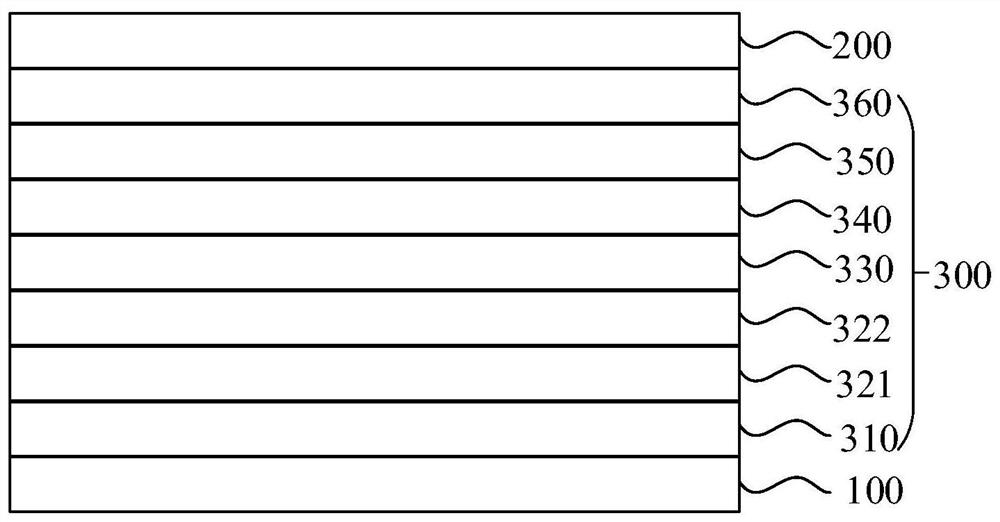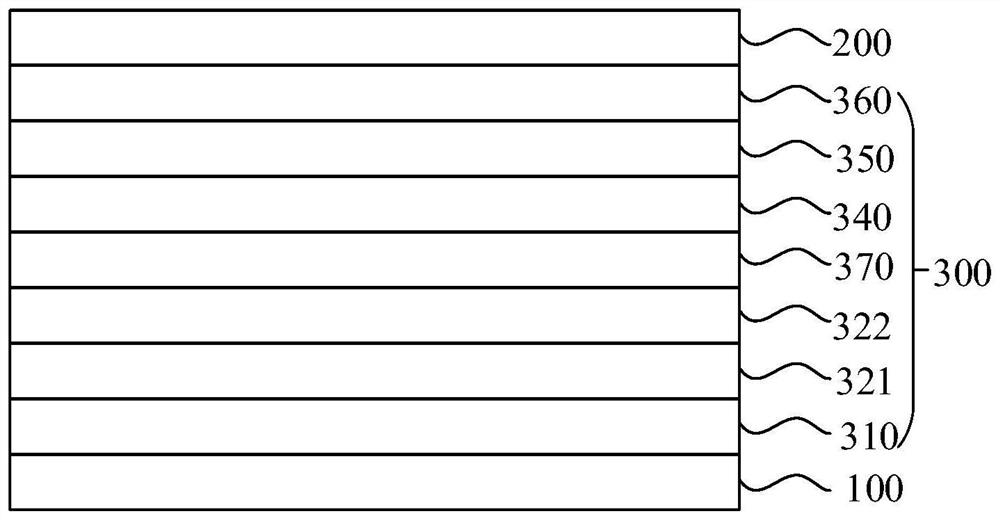Organic compound, electronic component applying the same and electronic device
A technology of organic compounds and carbon atoms, applied in the field of organic electroluminescence, to achieve the effects of improving efficiency, enhancing polarity, and improving electron injection/transport performance
- Summary
- Abstract
- Description
- Claims
- Application Information
AI Technical Summary
Problems solved by technology
Method used
Image
Examples
Embodiment approach
[0120] According to one embodiment, the electronic component is an organic electroluminescent device. The organic electroluminescent device may be, for example, a blue organic electroluminescent device.
[0121] In a specific embodiment of the present application, the functional layer includes an electron transport layer, and the electron transport layer includes the organic compound. The electron transport layer can be composed of the organic compound provided in this application, or can be composed of the organic compound provided in this application and other materials. The electron transport layer may be one layer or more than two layers.
[0122] In a specific embodiment, an organic electroluminescent device may include an anode 100, a hole transport layer 321, an electron blocking layer 322, an organic light-emitting layer 330 as an energy conversion layer, an electron transport layer 350, and a cathode 200 stacked in sequence. . The organic compound provided in this ...
preparation example 1
[0147]
[0148] (1) Sub 1-I-A1 Synthesis
[0149] Tetrabromo-p-benzoquinone (43.0 g, 74.7 mmol) was dissolved in ethyl 2-methoxyacetate (400 mL, 2-methoxyethyl acetate) and stirred at 60°C. After cooling to room temperature, 27% ammonium hydroxide solution (43 mL) was added dropwise, stirred at 80° C. for 3 hours, and stirred at room temperature overnight. The precipitate obtained by filtration was washed several times with distilled water, washed with acetone and dried to obtain compound sub 1-I-A1 (25.1 g, yield: 90%).
[0150] (2) Sub 1-II-A1 synthesis
[0151] First weighed sub 1-I-A1 (25g, 84.5mmol) and reducing agent Na 2 S 2 o 4 (44.1g, 253.4mmol) was added into a 1000mL two-necked bottle, and then the air in the two-necked bottle was completely replaced with Ar. Add 500 mL of double-distilled water into the two-necked bottle with a syringe, stir the reaction at 40°C for 1 hour to stop the reaction, wait until the light yellow solid is completely precipitated, f...
preparation example 2-11
[0163] The compounds in Table 2 were synthesized in a similar manner to Compound Preparation Example 1, except that raw material 3 in Table 2 was used instead of phenylboronic acid, and raw material 2 was used instead of 4-biphenylboronic acid.
[0164] Table 2
[0165]
[0166]
PUM
 Login to View More
Login to View More Abstract
Description
Claims
Application Information
 Login to View More
Login to View More - R&D
- Intellectual Property
- Life Sciences
- Materials
- Tech Scout
- Unparalleled Data Quality
- Higher Quality Content
- 60% Fewer Hallucinations
Browse by: Latest US Patents, China's latest patents, Technical Efficacy Thesaurus, Application Domain, Technology Topic, Popular Technical Reports.
© 2025 PatSnap. All rights reserved.Legal|Privacy policy|Modern Slavery Act Transparency Statement|Sitemap|About US| Contact US: help@patsnap.com



